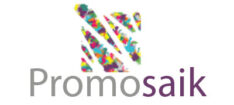Simone Stolzoff – December 5, 2018
Human translators are caught in the crosshairs of two conflicting trends.
On one hand, the world is increasingly globalized. With technology that can spread across borders with the touch of a button, the need for people who can translate words and understand the nuance of different cultures has never been greater.
On the other hand, the world is increasingly automated. Google released an AI-powered translation tool in 2016 that is “nearly indistinguishable” from human translation. It seems that human translators will inevitably all be replaced by algorithms, right?
But the fate of translators, as with most industries ripe for automation, is not black and white.
The most effective translators, at least for complex bodies of text, are neither human nor machine. They are, in fact, centaurs—humans augmented with the support of technology.
Companies like Snap or Zendesk, which are expanding to new markets and unveiling support for different languages, are turning to Lilt, a machine-assisted translation platform founded by a pair of former engineers on the Google Translate team.
Lilt is what AI researchers would call a human-in-the-loop system. Rather than just have someone translate text manually or have a machine translate text algorithmically, Lilt tries to combine the two. As a human translator translates text, Lilt predicts what they might write, similar to Gmail’s Smart Compose feature. When the human makes an edit to the algorithm’s suggestion, the data gets fed back into the machine, which makes the algorithm smarter over time.
Translation is a $50 billion industry globally and is set to grow to over $66 billion in the next five years, according to the language consulting firm Nimdzi Insights (pdf). Contrary to what you might expect, the US Bureau of Labor Statistics data shows that the demand for human translators has actually doubled in the past seven years, a trend that Lilt co-founder Spence Green doesn’t believe will necessarily slow down.
Green believes translation tools like Lilt will both lower the cost of translation on a per-word basis and increase the rate translators are able to charge for their time. Unlike translator apps geared for everyday consumer use, like Google Translate, Lilt is built for business use, where the queries are less structured and the stakes of inaccuracy are higher. Right now, a professional translation is still a cumbersome and expensive process. But as technology augments humans, that is set to change.
“There’s a market for $3,000 smartphones and there’s a market for $30 smartphones,” Green says. “In translation, we only have the $3,000 category right now.” Human translators can translate about 2,000 to 3,000 words a day, but with help of technology, Lilt says translators can turn around the same amount of text roughly three to five times faster, earning them more money in the process.

